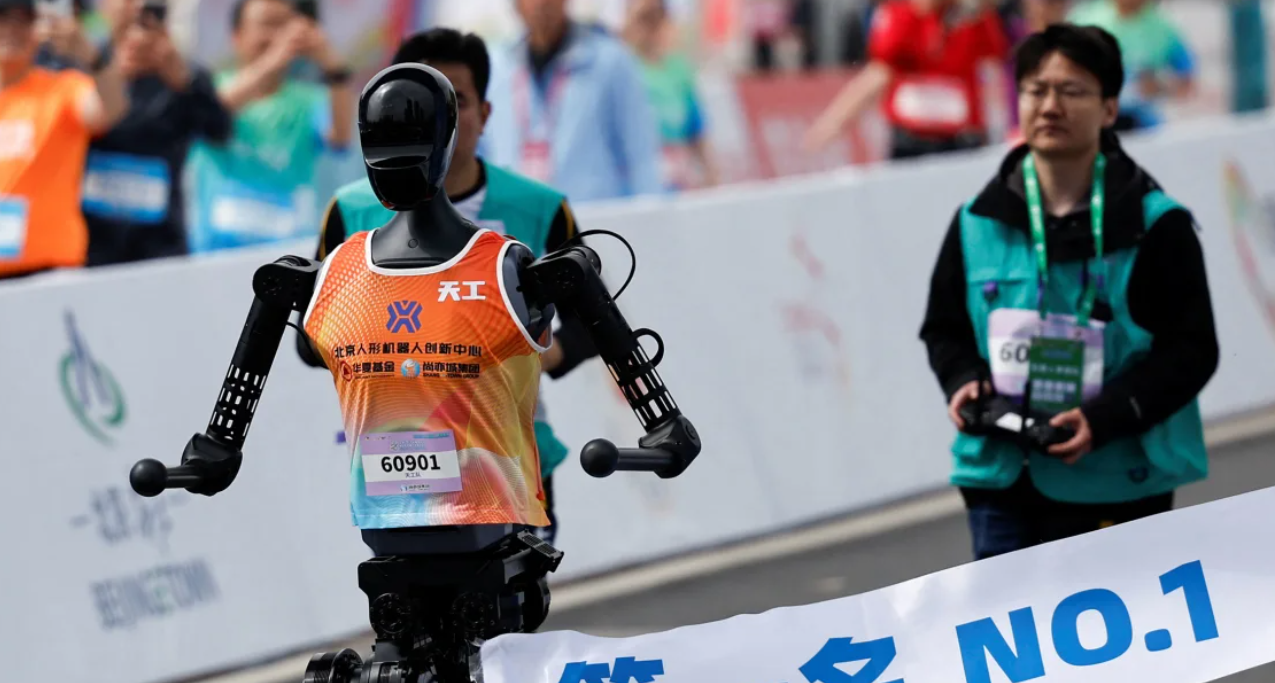Over 20 humanoid robots participated in the world’s first humanoid half-marathon in China, though they were far from outpacing their human counterparts. The event, which took place in Beijing’s Yizhuang district, was a demonstration of China’s progress in humanoid robotics technology, showcasing the country’s efforts to catch up with the United States, which still holds the lead with more advanced models.
Despite being technologically impressive, the robots struggled to keep up with the human runners over the 21-kilometer course. The race included teams from various companies and universities, with the robots completing the track alongside 12,000 human participants in a designated lane. While the robots faced challenges such as inclines and winding paths, they were allowed battery swaps throughout the race, though they incurred a penalty of 10 minutes each time a robot was replaced with a new one.
The leading robot, Tiangong Ultra, which was created by the Beijing Humanoid Robot Innovation Center, finished in 2 hours and 40 minutes, which was far behind the human world record of 56:42 set by Ugandan runner Jacob Kiplimo. The winning human male runner in the race completed the marathon in 1 hour and 2 minutes.
Although Tiangong Ultra didn’t perform as well as the human competitors, its design and advanced algorithms, which allowed it to imitate human running patterns, were significant achievements in humanoid robotics. The robot’s success in completing the race with minimal battery changes impressed its creators, who believe their model could rival similar models in the West. However, like most robots, Tiangong Ultra required some assistance during the race, such as a helper to prevent it from falling.
Videos of China’s humanoid robots have been circulating online, showing off their abilities, including cycling and performing acrobatic moves. These demonstrations have caught the attention of both state media and the public, as China positions itself to lead in the field of humanoid robotics. A policy document from China’s Ministry of Industry and Information Technology outlined plans to mass-produce humanoid robots by 2025, marking a key technological competition with other nations. While AI and robotics have raised concerns about the future of work and security, Saturday’s race highlighted that humans still have the advantage when it comes to long-distance running.













